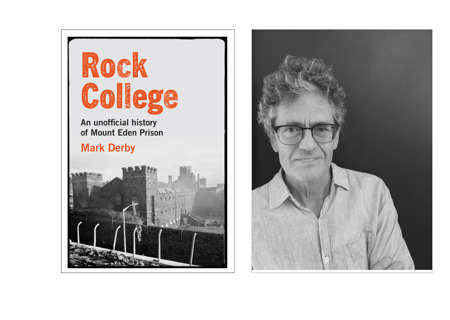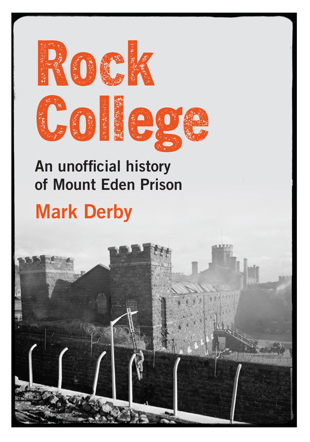Q1: Where did the idea for this book come from?
Almost ten years ago, in 2011, I heard that the old prison was being vacated, and its remaining inmates moved elsewhere. I thought, ‘I’ll bet there are plenty of weird stories to be told about that place,’ and then I realised that those stories hadn’t yet been recorded anywhere.
Q2: Did you find yourself resisting the idea at first, or was it irresistible?
I knew instantly that this was a strong idea for a book. I hoped it could become a sort of social history of New Zealand from the underside — an account of the people and practices that more conventional histories leave out.
Q3: What were some of the challenges you encountered in writing it?
The sheer scale of the subject matter was daunting. I started in 1841 with the very first Auckland jail — that meant a 170-year timeframe. Later I found it impossible to access many restricted records such as prisoners’ files. And the overwhelming bleakness of the material got me down at times — I began to wonder whether anyone would want to read the finished product.
Q4: Were there some particular research breakthroughs?
I’m really grateful to the many ex-inmates who told me about their memories of the prison. I tracked down ‘Diamond Jim’ Shepherd, once part of the Mr Asia drug gang, on Queensland’s Gold Coast. We had several long phone calls about his stretches inside, which began when he was just 16 and ended with the massive prison riot in 1965.
Q5: Some very sad things have happened in that prison. What shocked you the most?
I think the saddest discovery of all concerned the Lock Hospital, a little building that stood alongside the main prison in the 1880s. Women suspected of having contagious diseases could be held and treated there against their will. Most were sex workers with venereal diseases, and the youngest I heard of was aged just 10. As far as the society of the time was concerned, she was in the wrong and decent people had to be protected from her.
Q6: The ‘roll of honour’ of inmates is pretty remarkable. Some very famous and infamous New Zealanders have languished behind those stone walls. Who stands out for you as one of the most significant inmates?
Col. Pita Awatere DSO MC stands out for me. He was a Maori Battalion commander, an Auckland City Councillor, a renowned expert in taiaha and other traditional arts, who could also read Latin and quote Shakespeare by the hour. He became the kaumātua of the prison in the 1970s, and inspired many young Māori inmates to engage with their language and culture.
Q7: There have been some great personalities among them, and you got to interview a couple of them. Can you tell us a bit about that?
One day the mayor of Invercargill, Sir Tim Shadbolt, turned up at my place and we had a great chat about his several short stretches in the prison. Sandra Coney, the feminist author and local body politician, is another ex-inmate who was very generous with her time and impressions of the place. I’d have loved to talk to the serial escaper George Wilder, but he’s put his wild past firmly behind him and I have to respect that.
Q8: Did we keep Mount Eden running for far too long?
Absolutely. The building was a personal project of the first Inspector of Prisons, Arthur Hume, who wanted it to look like the grim, Dickensian prisons he was familiar with in the UK. That meant it was out of date and unfit for purpose even before it was finished in the early 20th century. Yet it staggered on for more than a hundred years after that.
Q9: What are the lessons one can take from the history of this place do you think?
- the measure of a civilised society is the way it treats its lowest-status citizens
- poverty causes crime — always has, always will
- behaviour that we regard as criminal in one era (such as homosexual activity) becomes normal in another, so we should be alert to what activity we currently regard as criminal
- and no-one likes living with a brimming chamberpot under their bed.
Q10: The old prison is now empty and deteriorating. What do you think should happen to it?
I end the book by setting out the various new uses people have suggested for this large, unique, publicly-owned facility which sits on the most valuable real estate in the country. Personally, I’m strongly in favour of turning at least part of the old prison into a national museum of our penal system, as other countries have done. I’m talking to a few politicians about it.


